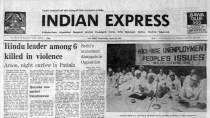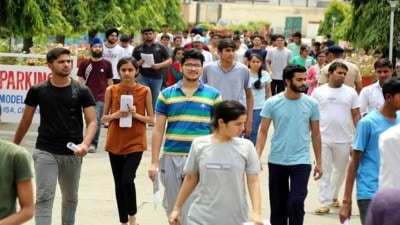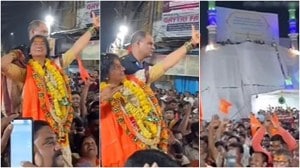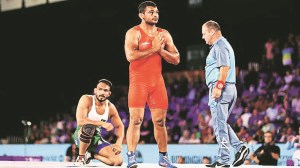- India
- International
Once upon a division
Remembering the Pakistan Resolution, 75 years later.
 The driving force behind Jinnah was the big UP landowner. Paradoxically, most knew that UP would never be part of Pakistan and they would have to leave.
The driving force behind Jinnah was the big UP landowner. Paradoxically, most knew that UP would never be part of Pakistan and they would have to leave.
By: J.S. Bandukwala
March 23 is the 75th anniversary of one of the pivotal moments in our history. The Pakistan Resolution was passed in Lahore. Jinnah lay down his demand for a homeland for the Muslims of undivided India. The consequences were disastrous for untold millions. It still affects our everyday life through communal tensions.
Jinnah was born barely 100 km from Porbandar, the birthplace of Gandhiji. A lawyer of great integrity and competence, he was far removed from the Muslim world to which he was born. But he was held in high regard by non-Muslim elites. He defended Bal Gangadhar Tilak in court; Sarojini Naidu wrote his biography; Motilal Nehru called him an ambassador of Hindu-Muslim unity. His weak point was an abhorrence of mass politics a la Gandhi. For Jinnah the lawyer, politics was a brief and ideally confined to the drawing rooms of the educated and the rich. He gradually moved away from secular politics and even gave up Bombay to practice law in London. By 1930, he had been written off in national politics. Oddly, he later turned to mass politics and became the leader of Muslims. Without his backing, Pakistan would have been impossible.
In his incisive book, Creating a New Medina, Venkat Dhulipala brings out the pathos, the tragedy and the absurdity of Jinnah and his admirers’ assumptions in the aftermath of the Pakistan Resolution.
The driving force behind Jinnah were the big UP landowners. Paradoxically, most of them knew that UP would never be part of Pakistan and that they would have to leave their vast holdings once the country was partitioned. Most of them lived long enough to deeply regret their folly — or more accurately, their fantasy.

Ahmed Rizvi created the blueprint of Pakistan a month before the Lahore resolution was passed. He visualised it as a fortress of Islam. Yet he never grasped the fact that a country created on religious grounds could easily fragment over disagreement on the definition of a true Muslim. And the authority to decide that rested with the ulema, which acquired huge power as a result. This would lead to increasing sectarian divisions within the Muslims. Branding Muslim sects whose religious beliefs differed from their own as kafirs, who, according to some extremist points of view, are liable to be killed, made life hell for Shias, Qadianis and Sufis. But it also made Hindus and Christians easy targets of blasphemy laws and fringe elements. More importantly, it made a mockery of those Muslims who believed that Pakistan would be a homeland for all Muslims, irrespective of sectarian divisions.
The raja of Mahmudabad, a minor prince near Lucknow, was the Hamlet of this tragedy. Jinnah treated him like a son, even considered him to be his successor before choosing Liaquat Ali Khan. Mahmudabad grandly declared that Pakistan would be an Islamic state, as opposed to a Muslim state. He branded all Muslim dynasties, from the Umayyads and Abbasids to the Ottomans and Mughals, as non-Islamic states. Pakistan would be the second Islamic state, exactly on the lines of the entity shaped by the first four Righteous Caliphs in Medina 1,300 years ago. If he had had a better understanding of Islamic history, the prince would have known that except for the first caliph, who died a natural death, the other three were killed by Muslims themselves even though they were paragons of virtue.
Mahmudabad went further and named the qualities of the new caliph. He would be all-powerful, with total spiritual, military and administrative authority. Such a person had to be pious, wise and well-versed in Islamic history and law. Mahmudabad had only one candidate in mind: Jinnah. Oddly, Jinnah knew almost nothing about the Quran. At one function in Karachi, he was requested to recite the Fatiha, the essence of the Quran. But Jinnah could not; he had to be prompted. Mahmudabad died a bitter man. A Shia, he could never adjust to the xenophobia that developed in Pakistan after Jinnah’s death and Liaquat’s murder. He wandered for years in India, then to London and finally Iran, where he died.
On this anniversary, we have to pay tribute to those who opposed the Pakistan Resolution. Leaders like Abul Kalam Azad and the Deoband ulema, led by Husain Ahmad Madani, paid a heavy price. They were vilified in the most unsavoury language by their Muslim opponents. Yet they persisted in the cause of a secular state, though Azad became quite bitter towards the end. Nevertheless, their efforts, as well as Gandhiji’s assassination and Nehru’s secularism, made it possible for Indian Muslims to identify with India. The task was made easier thanks to the realisation that Pakistan had failed. The separation of Bangladesh from Pakistan was the last nail in the coffin of the Two Nation Theory. Mention must also be made of progressive Muslims as well as the impact of Bollywood, which enabled most Hindus to accept Muslims as Indians.
Today, Indian Muslims are much better off than their Pakistani counterparts. In spite of the Babri Masjid demolition, the Gujarat killings and the rise of saffron extremism in national politics, Muslims know that their fate is in their own hands. They have to focus on quality education, business and the rights of women, the barometers of acceptance in our country.
One final lesson from the Pakistan Resolution: the mixing of religion with politics destroys the community, with frightening costs for the poor and the helpless, especially women. Our Hindu brothers must not make the same mistake.
The writer is a Baroda-based human rights activist.
editpage@expressindia.com
40 Years Ago
EXPRESS OPINION
More Explained
Apr 18: Latest News
- 01
- 02
- 03
- 04
- 05









































